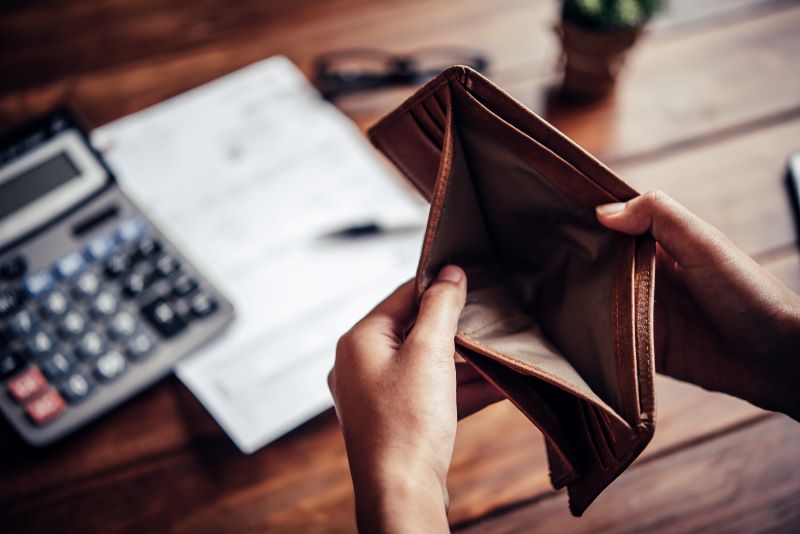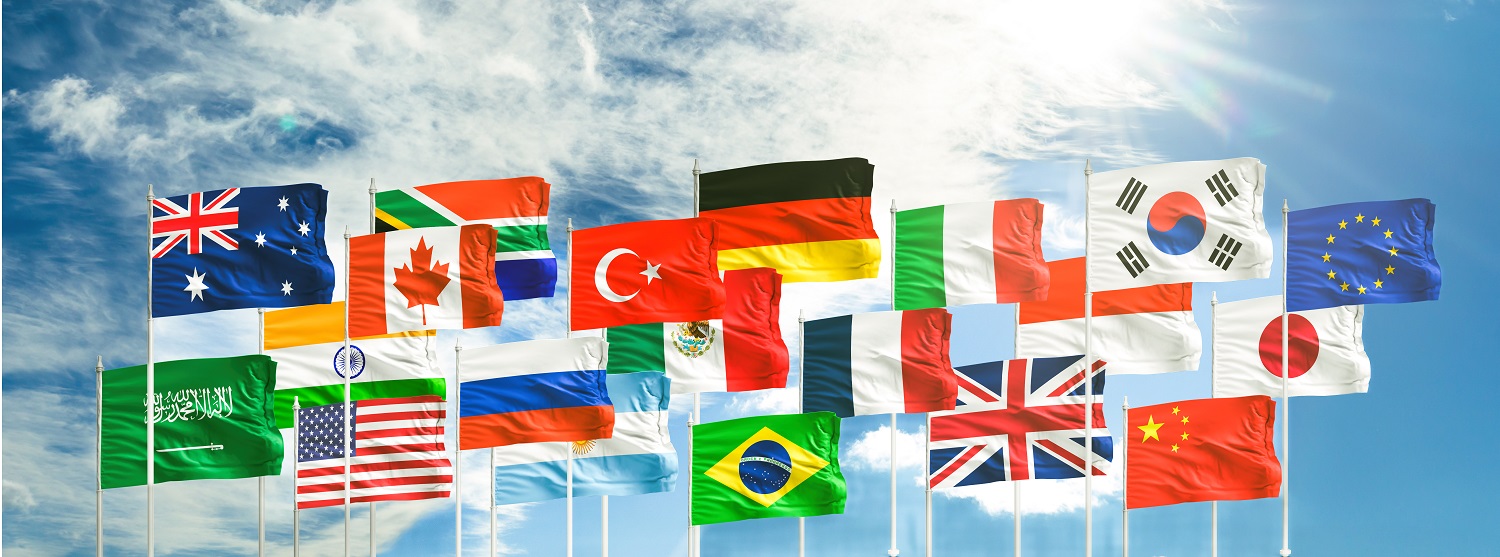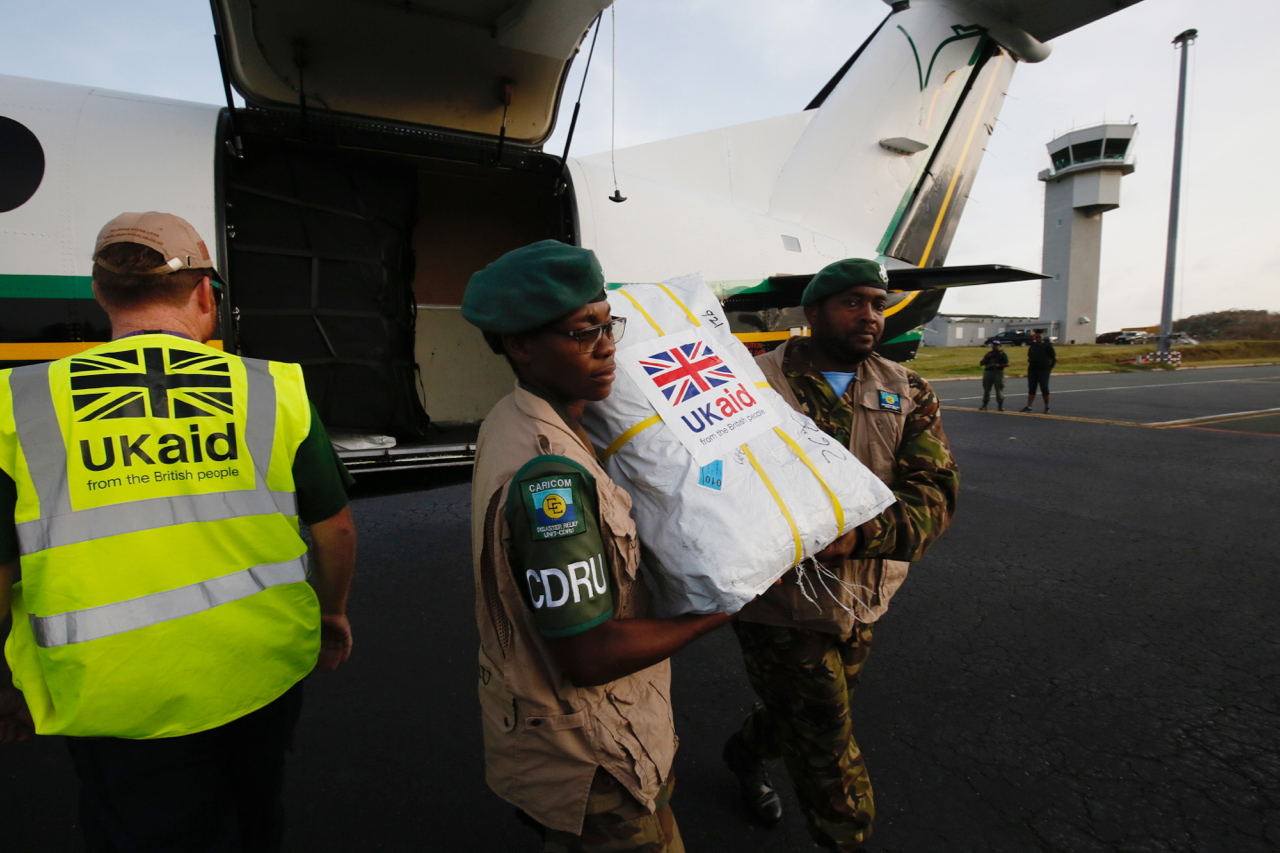Recommended
In the wake of a challenging year, the Bank of England (BoE) has found itself navigating a tumultuous economic landscape marked by significant upheavals. Following the release of the mini-budget in September 2022, the BoE was compelled to take proactive measures to stabilize the financial system. These interventions, however, were merely the first steps in a series of actions required to address the mounting pressures brought about by skyrocketing inflation. The BoE was forced to raise interest rates to levels not seen since 2008 to confront the inflationary surge, a decision that underscored the gravity of the situation.
Amidst these developments, some economists began to shed light on a concerning aspect of the UK's economic and financial landscape: its surprisingly modest foreign exchange reserves. Despite its position as the world's 6th-largest economy, the UK finds itself ranked a mere 18th in terms of its reserve holdings of foreign currencies and gold, behind emerging and developing countries like India, Brazil, Thailand, and Mexico.
Reserves management is a complex issue and we do not pretend to comment on the full array of tools that the UK deploys. But the role Special Drawing Rights (SDRs) play is of particular interest to us, given the efforts being made by the G20 to recycle SDRs to the benefit of low- and middle-income vulnerable countries. Should the relatively low level of UK reserves inhibit it from recycling SDRs to others? We think not, as the UK still can manage its reserves well and recycle SDRs to vulnerable countries, but the IMF can learn from this case to reform the VTA choice mechanism, the arrangement that allows countries to buy and sell SDRs.
Lesson 1: SDRs only leave the UK when the IMF approves a disbursement (not when the commitment to the PRGT or RST is made)
The commitments made as part of the G20 announcement to recycle $100 billion of SDRS from advanced economies to support more vulnerable countries are just pledges. That means that once a donor (like the UK), pledges to recycle SDRs, the funds remain in their coffers until the IMF approves a disbursement to a recipient country. Two years after the G20’s commitment, just 87 percent of the $100 billion goal has been pledged, and less than 0.5 percent of that goal has reached a vulnerable country.
Most commitments to recycle SDRs have been channelled towards two specific IMF trusts: the Poverty Reduction and Growth Trust (PRGT) and the Resilience and Sustainability Trust (RST). A significant portion of these SDRs remains held within the central banks of advanced economies. These trusts do not retain loanable resources themselves; rather, the loanable resources are retained within the central banks of the contributing countries until the IMF grants approval for disbursement. This approval prompts a request to the donor country's central bank to release the pledged SDRs. To date, such requests have been made just once for the PRGT and five times for the RST, together resulting in a total disbursement of less than 1 billion USD worth of recycled SDRs.
While both trusts share the common feature of not directly holding loanable resources, they have different financial structures. The PRGT allows recycled SDRs to be credited to an investment account. The IMF invests these resources to generate subsidy funds that facilitate PRGT lending at a 0 percent interest rate. In contrast, the RST requires that 20 percent of the promised loans to the RST be retained in a deposit account and at least 2 percent be held in a reserve account. Together these accounts ensure that loans from donors can be reversed if needed and interest rates can be kept below market. In terms of SDR accounting, SDRs are recycled not just as loans to developing countries, but also into these three accounts within the PRGT and RST. In the case of the UK, most recycling pledges from the UK are destined to be loanable resources to either the PRGT or the RST, but around half a billion SDRs have also gone to the reserve and deposit accounts of the RST.
Lesson 2: SDR recycling does not change foreign reserves. It can change the composition of those reserves—but probably not by much
In a recent blog, we explored the role of SDRs in central bank reserves and the mechanics of the Voluntary Trading Arrangement (VTA) market. The VTA market, which is run by the IMF, is the main way in which SDRs are exchanged for hard currencies, which has an impact on the reserve management of members of the VTA market. When a country wants to buy or sell SDRs, they approach the IMF, which then selects a participant from the VTA market (which includes the UK among its 40 members) to facilitate the trade. How the IMF makes this choice depends on a few factors:
First, the IMF looks at how SDRs are distributed among VTA members. If a country has a ratio of SDR holdings to allocation lower than the rest of VTA members, the IMF might ask them to buy SDRs, or the reverse if the ratio is higher than other VTA members.
Secondly, each VTA member specifies a trading range, indicating how much they're willing to buy or sell as a percentage of their total allocation. The IMF tends to favor countries whose proposed trade doesn't deviate too far from the centre of their trading range.
These criteria help ensure that VTA transactions don't push countries too far from their SDR allocation, which could result in SDR interest payments or receipts. However, it's not all about numbers. The IMF also considers other factors, like the type of currency involved in the trade and the frequency of past trades, to make sure the system shares the transaction burden fairly among members. Plus, it's worth noting that these transactions are voluntary, and VTA members can choose to reject them for their own reasons.
Why is the VTA market relevant for a decision about recycling? Because the UK has pledged to recycle a portion of its SDRs, once the IMF gives the green light for disbursements, this will naturally lead to a reduction in the UK's liquid SDR holdings—the reserve asset shifts from being SDRs to a loan to the PRGT or RST denominated in SDRs. (Whether these loans are less liquid that SDRs is debatable, given the encashment regime that the IMF trusts have, but nonetheless on the holder’s balance sheet the nature of the asset changes.) This shift sets in motion a dynamic within the VTA market. Because of the way this market operates, with its focus on balancing SDR holdings and allocations among participating countries, as UK the recycles more SDRs, the country becomes more likely to be asked by the IMF to buy SDRs in exchange for hard currency on the VTA. This, in turn, results in a decrease in the UK's foreign currency reserves and an increase in SDR holdings.
So, has SDR recycling result in a huge decrease in foreign currency reserves? No. When any country is called upon to provide hard currency via the VTAs, it is simply swapping one foreign-exchange asset (currency) for another (SDRs). There is, by definition, no net effect on the size of the foreign exchange portfolio. Measures, like the ones following the release of the mini-budget affected much more the foreign exchange reserves than any SDR recycling (Figure 1) or VTA exchanges.
Figure 1. Changes in foreign reserves and SDR holdings of the UK (in millions of US$)
Source: Bank of England
To recap, recycling SDRs does two things: in the first instance, there is an asset composition shift from SDRs to an SDR-denominated loan, increasing the loan component of the overall reserve portfolio. Then there is the potential of having to buy SDRs (and thus lose foreign currency) on the VTA market. At the extreme, this could make the UK’s foreign reserve holdings overly heavy in SDRs and light in foreign currency. Empirically this does not yet seem to be the case. But could it be?
Lesson 3: The UK can manage its reserves portfolio and still recycle lots of SDRs
As we've learned, SDRs will leave the UK when the IMF gives the green light for disbursement and as of now, the options for recycling SDRs are limited to two IMF facilities: the PRGT and the RST. The UK plays a substantial role in both of these facilities, ranking as the fourth-largest and third-largest contributor in terms of loan pledges for the RST and PRGT respectively. In total, the UK has pledged 4 billion SDRs since the 2021 allocation, with 1.5 billion allocated to the PRGT and 2.5 billion to the RST, equivalent to a total of 5.5 billion US dollars. However, as emphasized earlier, these funds will remain within the UK's coffers until the IMF grants approval for disbursement under either the RST or PRGT. It is important to note that the UK already pledged 4 billion SDRs in 2017 for the PRGT, of which nearly half have already been disbursed (according to the latest quarterly report on IMF finances).
Once the IMF calls on the UK to make a disbursement, those SDRs leave the UK and go to the recipient country, and in exchange, the UK will have on their balance sheet an SDR-denominated loan to the PRGT or RST. However, the IMF (and therefore the VTA market), shows the UK as holding fewer SDRs (the loan does not count as SDR holdings). Thus, the UK is more likely to be called on to buy SDRs in the VTA market.
Disbursements from the PRGT amount to around SDR 1 billion per year (with the exception of the period of COVID, when disbursements were larger). Less than half a billion SDRs have been disbursed from the RST since its creation 18 months ago, but the facility has outstanding commitments of around 3 billion SDRs that will be disbursed during the period 2023–2026. The UK lending pledges are around 15 percent for each facility, meaning that if lending continues as expected (a billion per year for the PRGT and the RST), the IMF will call on the UK to disburse approximately 0.3 billion SDRs per year. As of August 31, 2023, the UK holds 30.85 billion SDRs, 1.4 billion above their allocation. If the UK disburses 0.3 billion SDRs per year, the UK holdings would reach their allocation level in approximately 5 years (assuming the UK does not buy SDRs during this time). However, both the PRGT and RST loans will be repaid to the UK eventually: the PRGT has a grace period of 5 and a half years, and the RST 10 and a half years, which means the UK will start receiving repayments from both in the future. In the worst-case scenario, the UK would hold SDR-denominated loans totaling 6.36 billion SDRs in its reserve portfolio. This would reduce its SDR holdings to 83 percent, necessitating the purchase of 4.95 billion SDRs to reach the 100% ratio of holdings per allocation.
Nonetheless, the UK’s SDR holdings will be lower for a period because of its contributions to the two trusts, making it more likely to be called upon to buy SDRs in the VTA. If the IMF were to call on the UK to do so, their SDR-denominated reserves (which include both the loans to the trust and their holdings of SDRs) would rise markedly, from the UK’s point of view. While SDRs are an important part of many reserve portfolios, they can pose reserve management difficulties. If reserves need to be used for macroeconomic management, they need to be traded for currencies, which slows their availability. And it is hard to hedge SDRs against future currency and interest rate changes, because the SDR’s value is a weighted average of five currencies, with fluctuations in value, and even the weights occasionally change. Thus, countries will guard against having too heavy a concentration of SDRs in their reserve portfolio. This in turn means there may be a hesitancy to commit to further recycling, as it may intensify the SDR-denominated portion of their reserves.
Lesson 4: The VTA choice mechanism should include SDR denominated loans as part of SDR holdings
Above, we highlighted a crucial aspect: after the disbursement is approved by the IMF, central banks hold an SDR-denominated loan on their balance sheets rather than the SDR itself. However, the IMF does not account for this SDR-denominated loan as part of a country's SDR holdings. Consequently, during VTA transactions, these loaned SDRs are not considered, potentially making countries that have recycled SDRs more likely to be called upon for VTA trades compared to those that haven't. As table 1 below shows, VTA members that recycle SDRs currently have a ratio of holdings to allocation of 103.2 percent, slightly above the VTA members that do not recycle (that’s because as we have said before, less than 0.5 billion recycled SDRs have been disbursed). However, once all these commitments are fulfilled, VTA members that recycle SDRs will see their ratio of holdings as % of allocation going down 20 percentage points to 82.69%.
Table 1. Holdings as % of allocations comparing VTA members that are recycling and not recycling
|
|
Average current holdings as % of allocation |
Average holdings as % of allocation after recycling |
Change in % points |
|---|---|---|---|
|
VTA members recycling |
103.18 |
82.69 |
-20.49 |
|
VTA members not recycling |
102.95 |
102.69 |
-0.26 |
Source: IMF data query. Note: Table excludes Greece as it is temporarily out of the VTA market due to low level of SDRs holdings. More information for each country can be found in the annex in the PDF version of this note.
Despite this, we emphasized that the short-term impact on central bank balance sheets due to this mechanism is limited, and the VTA market is designed to balance out SDR holdings, even after recycled SDRs return to the UK’s balance sheets. However, there's an opportunity for the IMF to enhance the VTA choice mechanism by considering SDR-denominated loans part of SDR holdings. This adjustment would prevent the VTA market from “penalizing” members providing crucial support to vulnerable countries by recycling their SDRs.
While this approach presents a promising solution and is certainly an idea worth exploring for the IMF, it is important to acknowledge two potential challenges. Firstly, gaining consensus among VTA members for such a change could be a challenging task, as VTA members not currently participating in recycling might oppose the shift. Secondly, there are countries that, due to legal constraints, cannot participate in SDR recycling but have made contributions to the RST and PRGT in alternative currencies. In such cases, these nations could potentially face a dual burden—they would contribute to recycling and would be “penalised” by the rule change. Expanding VTA membership could offer a means to more equitably distribute this burden and address these challenges.
Bottom line
In conclusion, it's evident that SDR recycling is not the primary driver of fluctuations in the UK's foreign exchange reserves, and the fear of diminished reserves should not serve as a deterrent to continued SDR recycling efforts. As we highlighted in a previous blog, the UK sets an example for other donors to the IMF's PRGT. By lending to the PRGT, the UK essentially forgoes much of the compensatory interest. However, while the UK's generosity is praiseworthy, there is room for further commitment, as exemplified by countries like Japan, France, Australia, China, and Saudi Arabia, all of whom have exceeded the SDR recycling pledge by committing more than 20% of their SDR allocation. This underscores the potential for even greater contributions in support of global economic stability and development.
We have also seen that countries that are recycling their SDRs might be facing an unnecessary burden in the short term, since the VTA market choice mechanism does not take into account SDR-denominated loans to the RST and PRGT on central bank balance sheets. Reforming the VTA market to count these loans as part of SDR holdings would ensure that countries that are actively recycling SDRs are not saddled with excessive SDR-denominated balances in their foreign reserves.
The authors would like to thank Andreas Bauer, Rachel Turner, and Stephen Paduano for detailed and helpful comments on the piece.
Rights & Permissions
You may use and disseminate CGD’s publications under these conditions.
Image credit for social media/web: Adobe Stock







